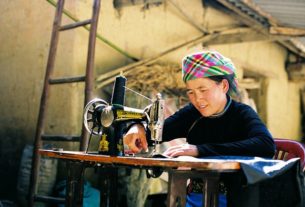Sewing isn’t just about creating beautiful garments or quilts. It’s a powerful activity that offers physical benefits you might not even think about.
From improving hand-eye coordination to promoting relaxation, the physical benefits of sewing are both diverse and impactful.
But how exactly does sewing contribute to better physical health?
Let’s dive into it.
Key Takeaways
- Enhances hand-eye coordination and fine motor skills.
- Improves posture and maintains joint mobility.
- Promotes relaxation and reduces stress.
- Boosts brain health and cognitive function.
- Supports physical and mental well-being through creative engagement.
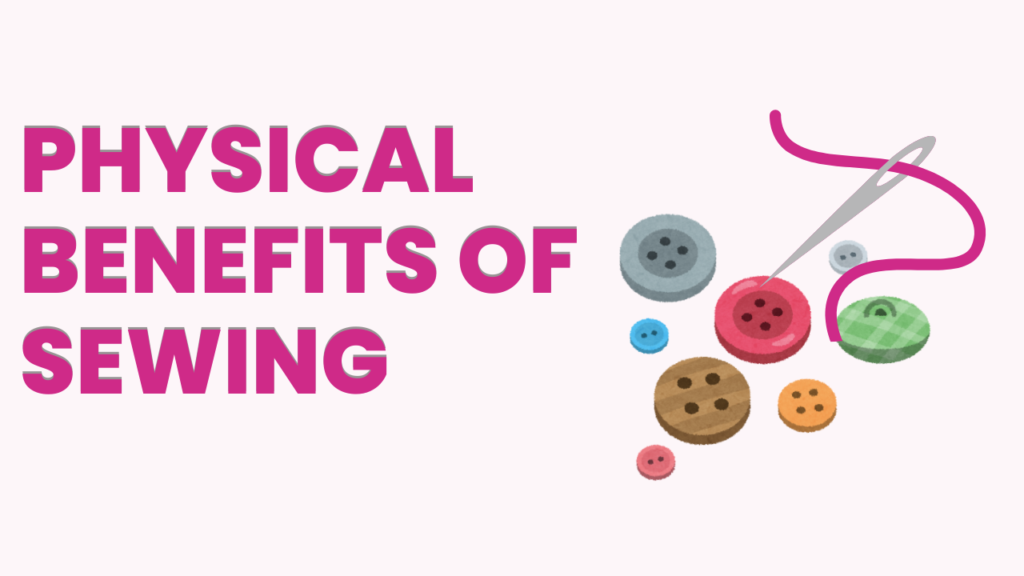
Enhancing Hand-Eye Coordination and Fine Motor Skills
When you think about sewing, the first thing that might come to mind is the intricate work it requires.
Threading a needle.
Cutting fabric precisely.
These tasks are more than just steps in a sewing project. They are exercises that improve your hand-eye coordination and fine motor skills.
I remember the first time I tried to thread a needle. It was frustrating, to say the least. But with each attempt, my hands became more steady, and my eyes more focused. Over time, I noticed a significant improvement in my dexterity.
This isn’t just my experience.
Many people, especially older adults, find that sewing helps maintain and even improve their fine motor skills. As we age, these skills naturally decline. But activities like sewing force us to use them, keeping our hands and fingers agile.
Sewing also involves working with small tools like pins, buttons, and bobbins. Handling these tiny objects further enhances our dexterity, ensuring that our fine motor skills stay sharp.
And it’s not just about the hands.
Sewing requires coordination between what you see and what your hands do. This constant engagement between the eyes and hands strengthens hand-eye coordination, a skill crucial not only in sewing but in many other daily activities.
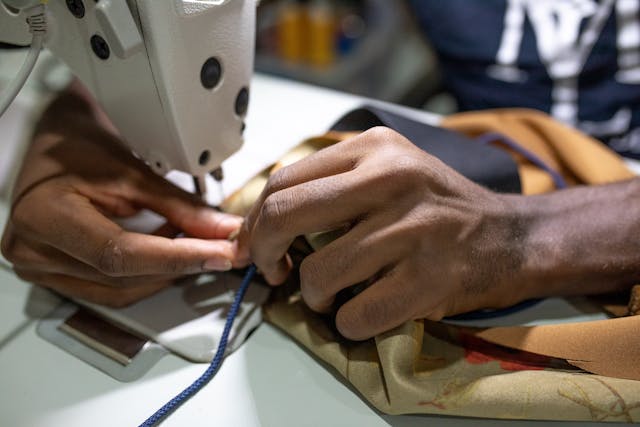
Think about it.
Every time you sew a straight line, cut fabric along a pattern or place a button just right, you’re training your brain and hands to work together more efficiently.
This isn’t just beneficial for the elderly.
Kids and adults alike can benefit from the fine motor skill development that comes with sewing. It’s a simple yet effective way to keep your hands and brain sharp, regardless of your age.
Improving Posture and Joint Mobility
One surprising physical benefit of sewing is how it can improve your posture.
Yes, you read that right.
When you sit down to sew, it’s tempting to hunch over your work. But sewing can actually teach you to sit up straight. Over time, this habit of maintaining good posture while sewing carries over to other activities, reducing the risk of back and neck pain.
I’ve noticed this in my own life.
After years of sewing, I’ve found myself naturally sitting up straight, whether I’m working at a desk or just sitting at the dinner table. It’s a small change, but one that makes a big difference in preventing those nagging aches and pains that come from poor posture.
But there’s more.
Sewing also helps improve joint mobility, particularly in the hands and fingers. The repetitive motions involved in sewing—like cutting, threading, and stitching—keep the joints in your hands flexible and strong.
This is especially beneficial for people with conditions like arthritis. Sewing can be a form of therapy that helps maintain joint mobility and reduce stiffness in the fingers and hands.
For a deeper understanding of how sewing is utilized in therapy, read about sewing as a form of occupational therapy.
It’s like giving your joints a gentle workout every time you sew.
You’re not just creating something beautiful. You’re also keeping your body flexible and mobile.
This aspect of sewing is particularly important for older adults who may be looking for ways to maintain their joint mobility. But even younger people can benefit from the physical exercise that comes with sewing.
It’s a simple way to stay active, even while sitting down.
Promoting Relaxation and Reducing Stress
We all know that stress is a killer.
It raises blood pressure, disrupts sleep, and can lead to serious health problems if left unchecked. But did you know that sewing can help reduce stress and promote relaxation?
When I sit down to sew, I find myself entering a state of calm focus. The repetitive motions of stitching, the sound of the machine, the feel of the fabric in my hands—it all works together to create a sense of peace and relaxation.
It’s like a form of meditation.
This isn’t just my experience. Research shows that sewing can lower levels of the stress hormone cortisol, which in turn helps reduce blood pressure and heart rate (MiNDFOOD).
The simple act of sewing allows your mind to focus on the task at hand, blocking out the worries and stresses of daily life. It’s a form of mindfulness, where you’re fully engaged in the present moment, free from distractions.
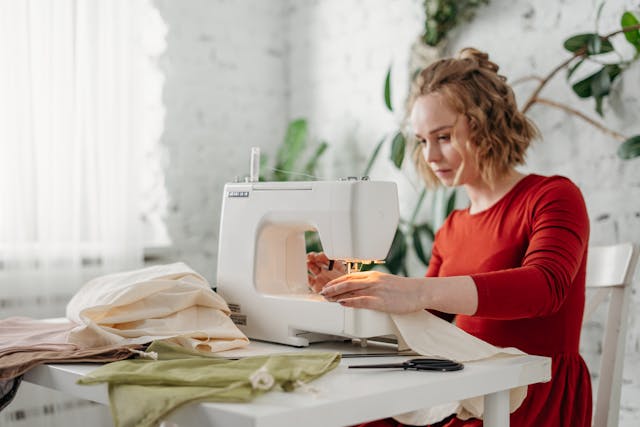
And the benefits go beyond just mental relaxation.
Sewing can have a direct impact on your physical health. By reducing stress, you also lower your risk of stress-related health problems like heart disease, high blood pressure, and anxiety (We Like Sewing).
It’s amazing how something as simple as sewing can have such a profound effect on both your mind and body.
Sewing isn’t just a hobby.
It’s a tool for better physical and mental health. Whether you’re improving your hand-eye coordination, maintaining good posture, or reducing stress, the physical benefits of sewing are too good to ignore.
Boosting Brain Health and Cognitive Function
Let’s talk about your brain.
Did you know that sewing can help keep your brain healthy and sharp?
It’s true.
When you sew, your brain is fully engaged. You’re concentrating on the task at hand, following patterns, and making decisions about colors, fabrics, and stitches. This mental engagement is more than just fun—it’s a workout for your brain.
Research suggests that activities like sewing can help maintain cognitive function as we age. This is because sewing stimulates the brain, encouraging it to create new neural pathways. This process, known as neuroplasticity, helps keep the brain flexible and capable of learning new things (We Like Sewing).
I’ve experienced this firsthand.
When I’m deep into a sewing project, I can feel my brain working. It’s not just about the creative process; it’s about problem-solving, planning, and executing my ideas. And the more I sew, the sharper my mind feels.
But it’s not just about staying sharp.
Sewing can also help protect against cognitive decline. By keeping your brain active and engaged, you’re reducing the risk of dementia and other age-related cognitive issues. It’s like a mental gym for your brain.
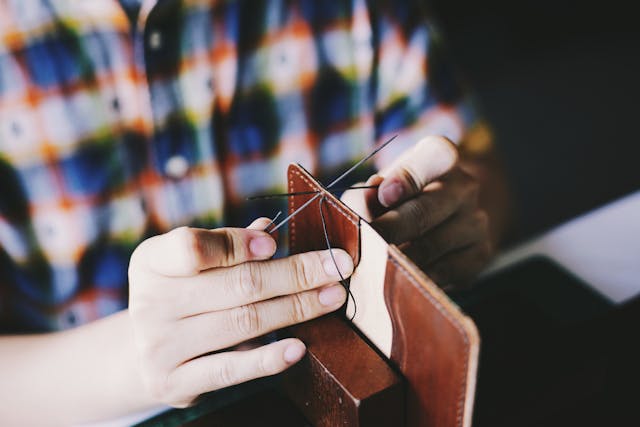
Conclusion
Sewing offers so many physical benefits that it’s hard to list them all in one go.
From improving hand-eye coordination and fine motor skills to promoting relaxation and boosting brain health, the benefits are truly remarkable.
So next time you pick up a needle and thread, remember—you’re not just creating something beautiful.
You’re also taking a step towards better health.
